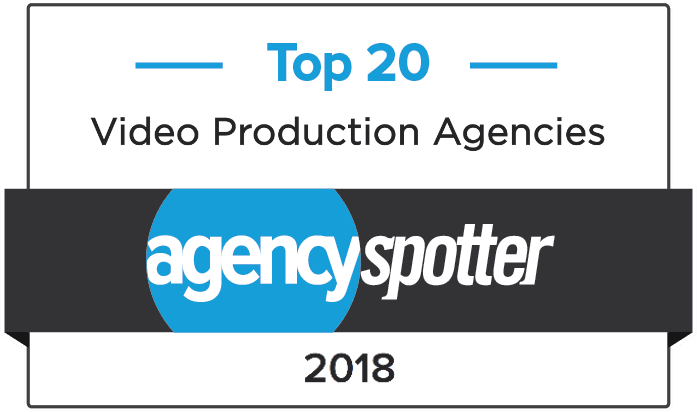So how much should you plan to spend on your new marketing video? In theory the answer is simple: the amount needed to engage your target audience based on your intended message and campaign goals.
Unfortunately, translating that to a specific number is not easy, because there are a myriad of different approaches that could work. This guide is designed to help you narrow down your choices and make a strategic and informed decision in five steps.
Step 1 – Define Clear Goals for Your Project

Writing down some key goals for your project is an important place to start, because it will help you prioritize what’s really important. Your goals don’t need to be revolutionary.
Just start by specifying the following:
- What are you trying to accomplish?
- Where will this content be used?
- Who are you targeting?
- Where are they in their purchasing decision?
- What tone do you need to convey?
For example, “The purpose of this video is to provide a high level overview of our service. It will sit on a key landing page, and target purchasing managers who are just beginning to research a solution to their supply chain problems. The tone should be credible, but still upbeat and friendly.”
Step 2 – Determine the Type of Video You Need
Believe it or not, there many different types of marketing videos and they all accomplish different things. For example, a short promotional video will help pique interest and inspire viewers to learn more, while a testimonial video will give viewers confidence in your company when they are nearing a final purchase decision.
The goals you set in step 1 will help you make this decision. View our guide “What Type of Video do You Need” to learn more about what might be the best fit for your specific application. Different types of videos have different production and budget requirements, so this is an import step.
Step 3 – Request Quotes From Potential Vendors

Now that you know what you are trying to accomplish, and the type of video you need, it is time to reach out to some potential vendors for quotes. Make sure you request a number of style examples and budget options. The way a studio responds will tell you a lot about what they value. Here are a few things to watch for:
- Do they try to understand your unique goals, and make recommendations based on that?
- Do their examples show a range in capabilities and styles, or are they limited a few options?
- Do they specialize in work that is custom and high-end, or is it less expensive and generic?
Step 4 – Determine Production Level and Style
The examples and quotes that you receive from potential vendors will likely show a vast range in both quality and price. Evaluate the different options with your audience and goals in mind. What level of quality do viewers expect from your brand? Is basic sufficient, or do you need to visually impress your viewers? Here are some of the factors that should be reflected in pricing options:
Production Value: This really boils down to how much time, polish, and expertise are put into each step of the production process. Is a video basic, or visually compelling?
Runtime: All else being equal, the longer a video is, the more expensive it is to produce. That said, run time is not directly correlated to cost.
Studio size: Larger studios have more overhead, and are therefore more expensive. The main advantage of a larger studio is that you will have more specialists working on your project.
When evaluating vendors, one of the most important things to look at is their portfolio. Keep in mind that companies advertise their best work. If their portfolio shows inconsistent quality, or any other red flags, be very cautious about proceeding.
Step 5 – Do Some Rough ROI Calculations
After evaluating different quality and budget options, eliminate those that are clearly too expensive, or too low quality for your company. Finally, do some rough ROI calculations to narrow down the remaining options. The best option is likely the highest quality level that will result in a positive ROI. This requires some very simple math:
-
Estimate the value of a conversion caused by the video ($500 for example).
-
Divide the total video cost by your estimated conversion value. This tells you how many conversions you need to break even on the video. ($10,000 / $500 = 20)
- Over the estimated lifetime of the video, is it reasonably possible to achieve this number of conversions or more? If so, the project budget is justified. If not, a lower budget is needed.
For example, if you estimate the value of a conversion at $500 and the cost of your video is $10,000 then you will need a minimum of 20 conversions to break even. If the video lives on your landing page for 2 years, that is less than one conversion per month. In many cases, the video could lead to many more conversions than this minimum number, so it is likely justified.
This method is obviously super rough, and based on a number of assumptions, but it will give you some grounds for determining if a particular approach will work for your campaign.
Conclusion
Establishing a specific budget for your campaign is not always easy. However, by following the steps outlined in this guide, you will be able to make a strategic decision that is more likely to achieve your goals. If you have any questions about this guide, or are looking for additional advice and recommendations, feel free to drop us a note.





